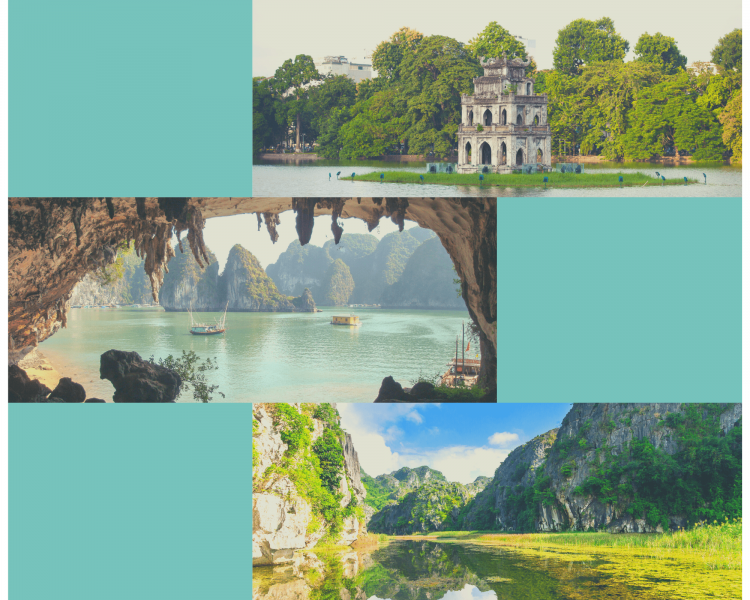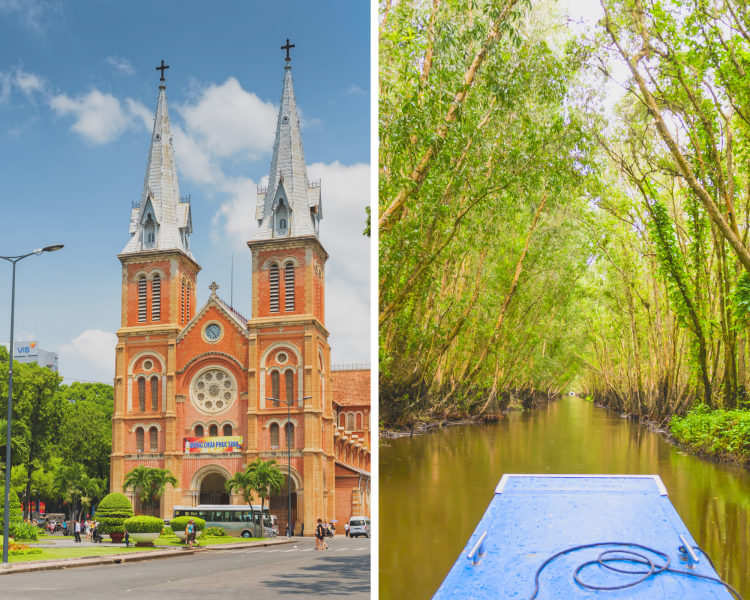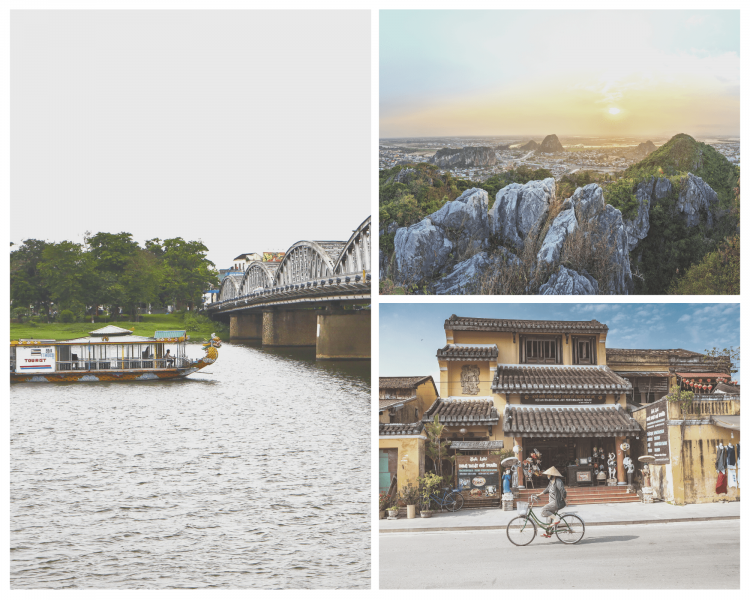A Traveler’s Guide to Weather and Climate in Vietnam

Imagine what will happen if you visit Halong Bay in the storm season or soak up Ho Chi Minh City on rainy days. You don’t want to ruin your vacation in Vietnam just because of the weather. Make the most of your travel by searching for information about weather and climate in Vietnam in advance.
Vietnam is among the top rising stars in the South East Asian tourism industry. Blessed with some of the most breathtaking natural landscapes you could see in the region, Vietnam’s natural wonders will definitely blow your mind away. From the tranquil Ninh Binh to the wild Mekong Delta, there are many trending places in Vietnam that take you on a fantastic trip of a lifetime.
That said, to fully enjoy the best of Vietnam, you should pick the right time, as the weather can have a direct influence on your itinerary. Furthermore, if you don’t want to visit overcrowded tourist attractions and book overpriced accommodations, it is always best to plan ahead your trip to pick out the best time to visit Vietnam. In this article, we will go through the weather and climate in Vietnam so that you will know when to visit this lovely country!
Climate in Vietnam varies from region to region
Vietnam is in the tropical zone, and its climate is heavily influenced by the monsoon, much like other mainland South-East Asian countries. The country’s climate is characterized by alternating dry seasons following rainy seasons, which often come with heavy rainfall. The average temperature remains stable year-round. However, in the North, the temperature does change seasonally, reflecting the 4-season climate in the region.
Vietnam’s climate is not homogenous throughout the country. In fact, Northern and Southern Vietnam have two climates that are quite different from one another in several aspects, not to mention mountainous regions and coastal regions! All in all, the climate in Vietnam is quite complicated.
Northern Vietnam’s climate

Northern Vietnam’s climate is more temperate than the tropical south. The most noticeable difference between the two regions is the fact that Northern Vietnam’s seasonality is much more pronounced, with very distinct springs, summers, autumns, and winters. There is still plenty of rain here and the distinction between dry seasons and rainy seasons still exists though.
The best time to visit Northern Vietnam would be from March to May and September to November. During these periods, you will be able to avoid the overcrowded Tet holiday, the incessant summer rain, and the frigid winds of winter, ensuring that you will be able to enjoy your trip to its fullest.
Spring in Hanoi is absolutely lovely with flowers in full bloom, and if you are planning on going to the Northwest mountainous region, autumn is the season to be, as this is the season where the emerald rice paddy fields take on a golden hue. The sceneries will surely take your breath away and make your entire trip worthwhile.
Summer in the North is quite hot, with the highest temperature soaring up to 33°C. Winter is very cold with frigid winds blowing constantly. Even if you are from a country with cold winters, don’t take this lightly as the occasional winter drizzles could very well chill you to the bone. In these cold winters, it is often best to find a good cafe and enjoy a fine cup of coffee to warm you up and get you ready for a chilly day.
See more on 7 Day Tour of Northern Vietnam
Southern Vietnam’s climate

Southern Vietnam’s climate is characterized by two very distinct seasons: dry seasons and rainy seasons. The Southwest monsoon has a strong influence on the region’s climate, being one of the reasons why rainfall is high. The region is also comparably hotter than in the North, and it boasts sunny weather for the most part.
When planning your trip to Southern Vietnam, you should take your trip’s purpose into account and find the perfect period to visit the region. In general, the best time would be somewhere between December and April. This is the peak of the dry season, so there won’t be much rain at all. The weather will be mostly sunny and nice all around, making it perfect for you to enjoy your trip. Most people, especially locals, don’t go on a trip during this period, so you should expect fewer tourists than usual.
There is something to keep note: The country’s Tet festival takes place somewhere at the end of January or the start of February. This is the busiest season of the year for the tourism industry, so if you don’t want to be crammed or sandwiched among waves of tourists, it is best to avoid this season.
Going to the South of Vietnam during the rainy season sounds like a bad idea, but it isn’t entirely so. During the rainy season, streams and waterfalls are much lusher, and it is always a great idea to see nature blooms in front of your eyes as the rain falls down. The rainy season will certainly offer you so much to see if you love nature and could put up with a bit of rain.
See more on Traveling during Vietnam rainy season
Central Vietnam’s climate

Central Vietnam is a harmonious mix between the two other regions. The climate takes on typical coastal traits, with stormy seasons abound. This region is particularly vulnerable to typhoons, so it is best that you should avoid the typhoon season, which should be around November. The region is also famous for sandy beaches and islands, so the best time to visit would be between January and May. May and August are particularly hot months, so you should take this into account as well.
The city of Hoi An is a special case in that it does not experience heavy rainfall as in other cities in the region. This city is particularly beautiful in the months between February and July. If you do come to the region, don’t miss out on the city of Hoi An!
See more on 6 Day Tour of Central Vietnam
Seasons of festivities

The weather shouldn’t be the only reason you care about when you plan out your itinerary for your Vietnam trip. You should take the festivals into account as well! Being a country with a unique culture, Vietnam has plenty of beautiful and culturally significant festivals to offer you an amazing experience.
Tet is arguably the biggest festival of the year. During Tet, festivities spring to life as the entire country celebrates the end of a lunar year and the beginning of a new one. There are plenty of games, festivals, and cultural activities throughout the country for you to partake in. Each region will have its own festivals, so even if you did go to the North last year, you will definitely find something new if you go to the South. Tet usually takes place at the end of January and the beginning of February. The exact date differs from year to year, so you will have to double-check first.
The mid-autumn festival is also another local favorite. Although the festival is not as glamorous as it used to be in the past, the locals still celebrate this occasion in their own ways. The mid-autumn festival usually takes place in September. During the festival, children would parade around their block with lanterns, and people would eat mooncakes and drink tea to celebrate the occasion. Nowadays, very few kids still parade around the block, but the mooncake-eating tradition is still running strong within the Vietnamese people’s habit.
There are also plenty of regional festivals that will certainly be worth your time if you could check them out. Don’t forget to ask your tour guide or your local friends to see if there will be a local festival for you to enjoy with them. The experience will surely leave you with great memories.
As many Vietnam travel tips say, Vietnam is a great country to visit year-round. It depends much on your choice of destinations to choose the right time to plan a good trip. You just have to avoid the typhoon season in general, and try to keep up with the latest weather report. If you need more help on your trip to Vietnam, don’t hesitate to contact us so that we can give you the best travel advice!
© Copyright
Viet Nguyen written for Maika Tours
You May Also Like: